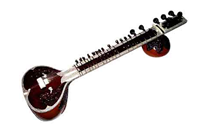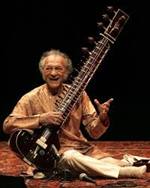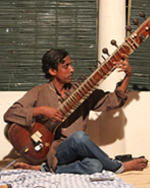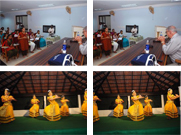School of Environmental Sciences
Priyadharshini Hills P. O
Athirampuzha
Kottayam, Kerala, India-686560
P +91 2732120, +91 9447 391 168
E cta@mgu.ac.in
F +91 481 271 009/02
Priyadharshini Hills P. O
Athirampuzha
Kottayam, Kerala, India-686560
P +91 2732120, +91 9447 391 168
E cta@mgu.ac.in
F +91 481 271 009/02
The International Conference on Membranes (ICM-2013)
on October 3rd to 6th2013
on October 3rd to 6th2013
International Conference on Frontiers of Mass Spectromerty (ICMS 2013)
on September 6th to 9th 2013
on September 6th to 9th 2013
Second International Conference on Advanced Oxidation Processes (AOP 2012)
on October 5th to 8th 2012
on October 5th to 8th 2012
Sitar
 |
| Sitar is a plucked string instrument common to Indian classical music, in the Hindustani classical traditions (specific to northern India). It is fairly a complicated musical instrument. It has movable frets having over 20 strings. It is played with a pick called mezrab. It is perhaps the most popular stringed instruments in India. Sitar is now synonymous with India and Indian culture in the entire world. The origin of Sitar is believed to be from Persia (Iran) and the word meaning is three strings. However its real history is in controversy. It flourished in the 16th and 17th centuries and arrived at its present form in the 18th century Mughal period. It is clear that the present form of Sitar had taken on its present form by the mid-nineteenth century. Therefore, it is a hybrid of Persian and Indian lutes, and is less than three centuries old. There is also a vague information that the sitar may have been developed from the Kachappi Veena. |
| Sitar has two layers of strings which are made of steel, brass and copper. 13 steel strings on the bottom layer are known as taraf (meaning joy or excitement). They resonate when the strings on the main bridge are plucked. The top layer contains seven strings which are used to create the melody and drone. Two of the three bridges anchor two of the three chikari (drone) strings that serve to extend notes and/or punctuate the rhythm. The remaining five strings lie on a bridge that spans the width of the neck. All seven strings converge, in a parallel manner, on the main bridge that sits on the gourd section. Sitar has three popular modern styles; the two popular styles are the "gayaki style" (or Vilayat Khan style) and the full decorated "instrumental style" (also represented as Ravi Shankar style). |

| Pundit Ravi Shankar; the sitar Maestro |
| This music gained western attention with the touring and popularisation by the Sitar Maestro Vilayat Khan (1950s) and Ravi Shankar (1960s along with his musical partner on Tabla Alla Rakha). Balram Pathak, Enayat Khan, Imdad Khan, Imrat Khan, Manilal Nag, Nikhil Bannerjee, Rais Khan, Ravi Shankar, Vilayat Khan Budhaditya Mukherjee, Debu Choudhury, Deepak Choudhury Irshad Khan, Krishna Bhaft, Nishat Khan, Shahid Parvez, and Shujat Khan are some of the prominent names attached to sitar. |

| Kerala based Sitarist Shri. Vinod Sankar on a live concert |
Gallery
Home | Biography | Publications | Our Lab | News | Events | Erudite | SECAS | Research
Group | Collabrotions | Photos | Contact
Group | Collabrotions | Photos | Contact
| CTAMGU © 2012 | Design & Developed By : ITS Developers |


